Disclosure: This article contains affiliate links. We may earn a commission from purchases at no extra cost to you, which helps our travel content.
Los Angeles often conjures images of palm-lined boulevards, celebrity mansions, and the iconic Hollywood sign. Yet beneath this glossy veneer lies a metropolis with historical layers as diverse as its population. Having spent three fascinating weeks exploring LA with my architectural lens last autumn, I discovered the city's remarkable historical tapestry extends far beyond studio tours and star-studded sidewalks. While my four-year-old daughter stayed with her father in Valencia, I had the luxury of diving deep into neighborhoods where history whispers from adobe walls and Art Deco facades. What struck me most was how these overlooked historical sites tell the authentic story of LA's development—from indigenous settlements to Spanish colonization, from Victorian prosperity to multicultural immigration waves. This guide unveils ten extraordinary historical treasures that most tourists (and many locals) miss entirely, perfect for couples seeking meaningful connections with the real Los Angeles.
1. Heritage Square Museum: Victorian LA Frozen in Time
Tucked away in Highland Park sits one of LA's most surreal historical experiences—a collection of rescued Victorian mansions that would otherwise have been demolished during the city's mid-century modernization frenzy. Heritage Square Museum isn't your typical velvet-rope museum experience; it's an entire neighborhood preserved as a living time capsule.
When I visited on a quiet Wednesday morning, I had the rare opportunity to photograph these architectural masterpieces in golden hour light without crowds. The Perry Mansion particularly captivated me with its elaborate Eastlake detailing—intricate woodwork that tells the story of 1870s prosperity in what was then a fledgling city. What makes this collection special is that each structure was physically relocated here from various LA neighborhoods, saved from destruction by preservation advocates.
The docents here share fascinating stories about Victorian domestic life that you won't find in guidebooks. I learned that the elaborate front parlors in these homes were rarely used except for formal visits and funerals—a stark contrast to our modern open-concept living. My guide pointed out clever architectural features like transom windows that created natural air conditioning in the pre-electric era.
For architecture enthusiasts, I recommend bringing a portable monocular to study the ornate details on upper floors and cornices. The craftsmanship is extraordinary, and having proper magnification helps you appreciate elements that would otherwise go unnoticed.

💡 Pro Tips
- Visit on weekdays to have the grounds nearly to yourself
- Join the guided tour rather than self-guiding—the docents' knowledge transforms the experience
- The museum hosts Victorian-era craft workshops monthly—check their calendar before visiting
2. Bradbury Building: Architectural Marvel Hidden Behind a Modest Facade
Downtown LA's Bradbury Building taught me an essential lesson about Los Angeles: never judge its buildings by their exterior. From Broadway, this 1893 structure appears almost unremarkable. Step inside, however, and you're transported into what feels like a Victorian steampunk fantasy—a soaring five-story atrium with intricate wrought iron railings, open-cage elevators, and marble stairs bathed in natural light from the massive skylight above.
What fascinates me about the Bradbury is how it represents LA's early ambitions. Built by mining magnate Lewis Bradbury, it was designed not by a trained architect but by George Wyman, a draftsman who allegedly consulted a Ouija board before accepting the commission. The result is a building that feels both of its time and strangely futuristic—which explains its appearances in sci-fi films from Blade Runner to The Artist.
During my visit, I spent nearly two hours photographing the interplay of light and shadow across the iron latticework. The building functions as a working office space, so I recommend visiting between 9am and 5pm on weekdays when the security guards allow visitors to explore the ground floor and look up through the atrium. Weekday mornings offer the best light photography conditions as the sun streams through the skylight.
For architectural photographers, I found my tripod essential for capturing the low-light interior details without blur. The compact design was perfect for navigating the busy space without disrupting others, while providing the stability needed for those dramatic upward shots of the atrium.
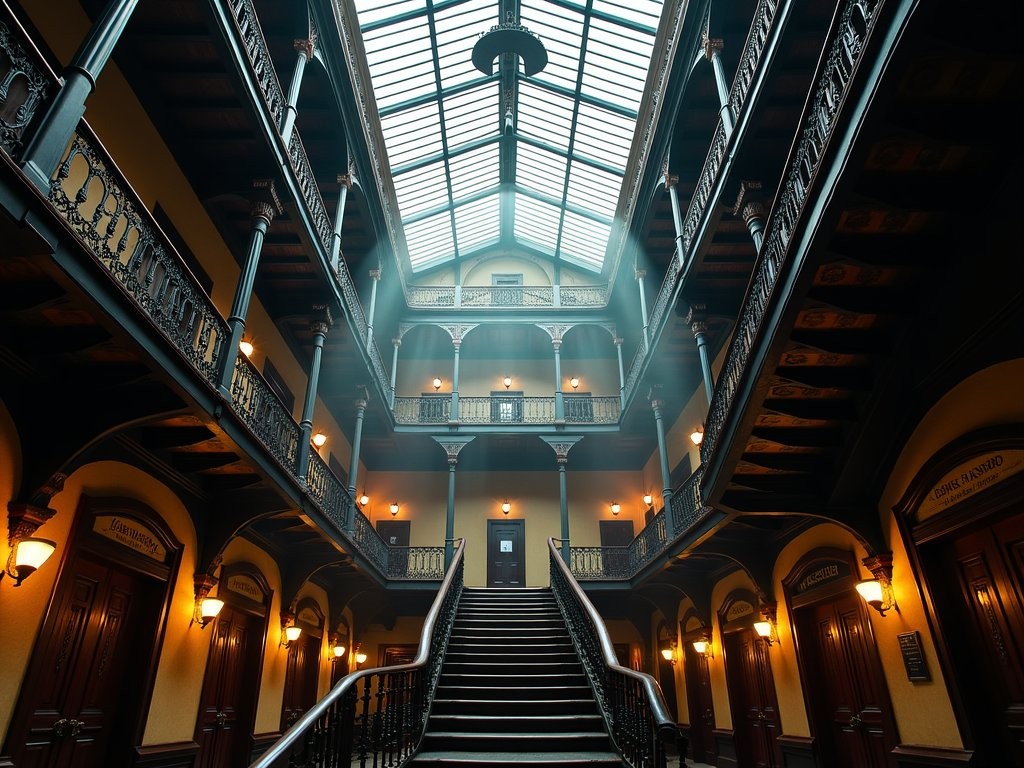
💡 Pro Tips
- Visit between 10am-11am when the light through the skylight is most dramatic
- Security only allows access to the ground floor, but that's enough for spectacular photos
- Look for the original mail chute system still visible along the walls
3. Fort MacArthur Military Museum: San Pedro's Forgotten Coastal Defense
Perched on the bluffs of San Pedro, Fort MacArthur represents a chapter of Los Angeles history rarely discussed in travel guides—its military significance. This former coastal defense installation protected the Port of Los Angeles through both World Wars, and today its remaining bunkers and battery emplacements offer a fascinating glimpse into how the city once prepared for potential invasion.
What struck me most during my exploration was the contrast between the fort's serious military purpose and its spectacular ocean views. Standing inside Battery Osgood-Farley, a massive concrete gun emplacement built in 1919, I tried to imagine the tension felt by soldiers scanning the Pacific horizon for enemy ships while surrounded by such natural beauty.
The volunteer-run museum houses an impressive collection of military artifacts, but the real treasures are the outdoor installations. Walking through the network of underground tunnels and ammunition rooms, I felt transported to a different era of American history. The docents—many retired military—share compelling stories about daily life at the fort during its active years.
My most memorable moment came during their monthly evening event when they demonstrated the massive searchlights once used to scan for enemy aircraft. Against the night sky, with the Port of Los Angeles glittering below, these powerful beams created a haunting connection to the past.
The museum's isolated location means it receives far fewer visitors than it deserves. When I visited on a Saturday afternoon, I shared the entire complex with perhaps a dozen other history enthusiasts, creating an intimate experience rarely found at LA's more popular attractions.
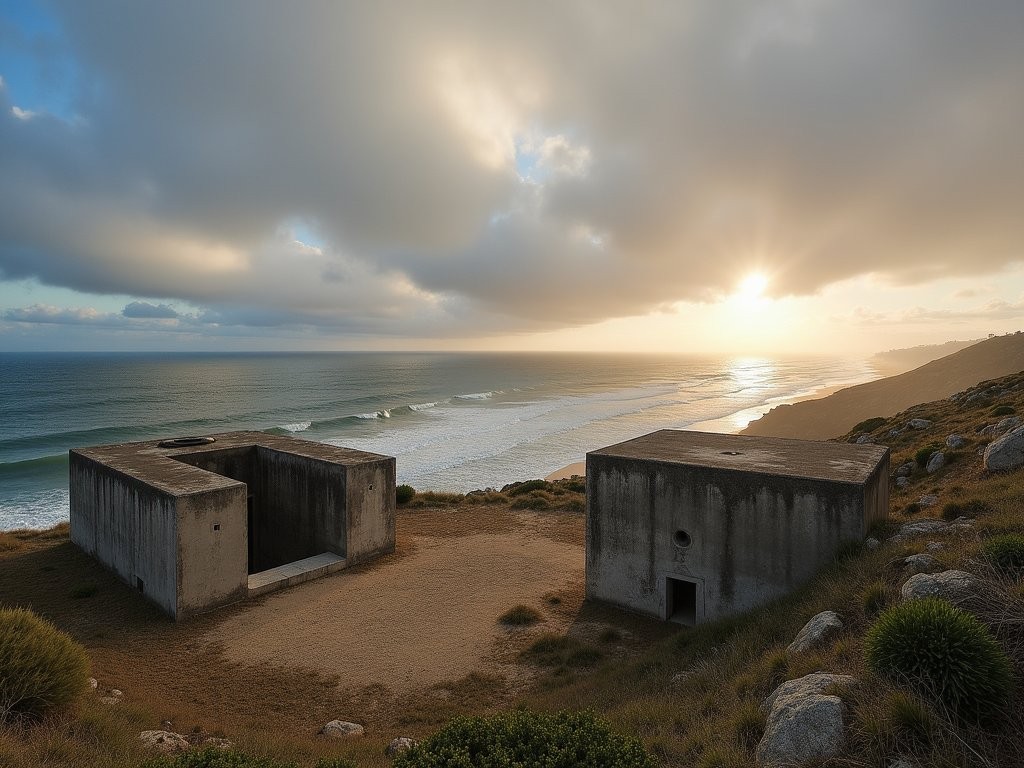
💡 Pro Tips
- Check their website for special events including night tours and searchlight demonstrations
- Wear comfortable shoes as the concrete pathways and stairs can be challenging
- Bring binoculars to appreciate both the military installations and the spectacular coastal views
4. Los Angeles Alligator Farm: The Bizarre Attraction That Time Forgot
While the physical location no longer exists, the story of the Los Angeles Alligator Farm represents one of the city's most peculiar historical chapters. From 1907 to 1953, this extraordinary attraction in Lincoln Heights allowed visitors to watch over 1,000 alligators—and even hold baby ones or ride on the backs of larger specimens. Yes, you read that correctly.
During my research at the Los Angeles Public Library's photo collection, I discovered dozens of surreal images showing well-dressed Angelenos casually interacting with alligators in ways that would horrify modern animal welfare advocates. The farm eventually relocated to Buena Park near Knott's Berry Farm before closing permanently in 1984.
What fascinates me about the Alligator Farm isn't just its obvious strangeness, but how it represents LA's early tourism industry before Hollywood dominated the landscape. The city once featured numerous animal-centered attractions catering to visitors' exotic tastes, from ostrich farms to lion parks.
Today, you can explore this bizarre history through the remarkable photo collection at the Lincoln Heights Library branch, which houses archives and memorabilia from this forgotten attraction. The librarians have created a small but fascinating display that includes original promotional materials and photographs.
For couples interested in LA's weird history, I recommend pairing this research visit with lunch at the nearby Lincoln Heights Kitchen, a local favorite housed in a building that dates back to the era when alligators were the neighborhood's main attraction. Their historic photos of the area make for fascinating viewing while enjoying excellent locally-sourced cuisine.
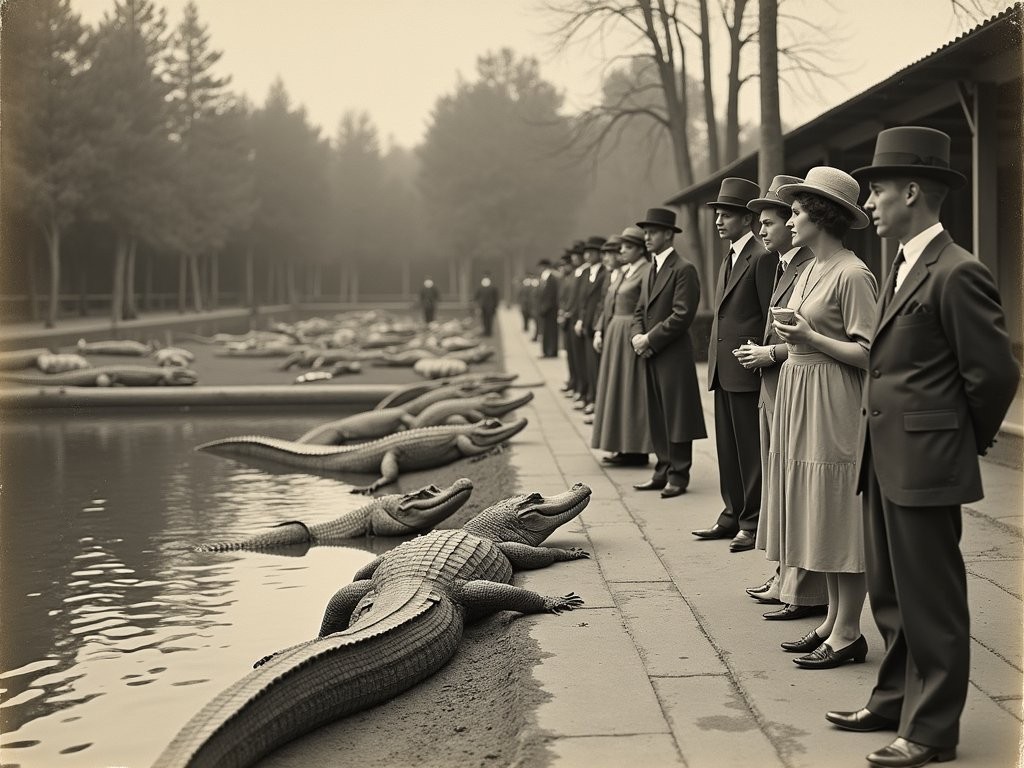
💡 Pro Tips
- Call the Lincoln Heights Library in advance to ensure access to the special collections
- Look for the small commemorative plaque near the original site at 3627 Mission Road
- The LA Public Library's online digital collection also contains numerous Alligator Farm photographs viewable from anywhere
5. Biddy Mason Memorial Park: Hidden Tribute to a Pioneering Black Angeleno
Tucked between modern skyscrapers in downtown LA lies a small but powerful tribute to one of the city's most remarkable historical figures. Biddy Mason Memorial Park commemorates a woman born into slavery who became one of Los Angeles' first Black landowners and philanthropists after winning her freedom in California courts in 1856.
Visiting this intimate space on Spring Street, I was moved by how Mason's extraordinary life story is told through an 81-foot concrete wall featuring timeline, photographs, and quotes. Born enslaved in Georgia in 1818, Mason walked behind her owner's wagon from Mississippi to California, where she successfully sued for her freedom. She worked as a midwife and nurse, saved enough to purchase land in what is now downtown LA for $250, and became a wealthy businesswoman and community leader who provided food and shelter to those in need.
What makes this site special is its thoughtful design by artist Sheila Levrant de Bretteville and historian Dolores Hayden. Rather than a traditional statue, the memorial uses architectural elements to create a space for reflection. The timeline wall leads visitors chronologically through Mason's life while incorporating tactile elements that make history accessible to all visitors.
I spent a contemplative hour here sketching the memorial's details in my travel journal, which I always carry to document architectural discoveries. The blank pages are perfect for both writing and sketching, helping me capture not just what these historic sites look like but how they make me feel—something particularly important at emotionally resonant places like this memorial.
The park's location in the heart of downtown's business district means it's often overlooked by tourists and even locals rushing past. Visit during lunch hours on weekdays and you might witness downtown office workers enjoying this peaceful historical oasis amid the urban bustle.
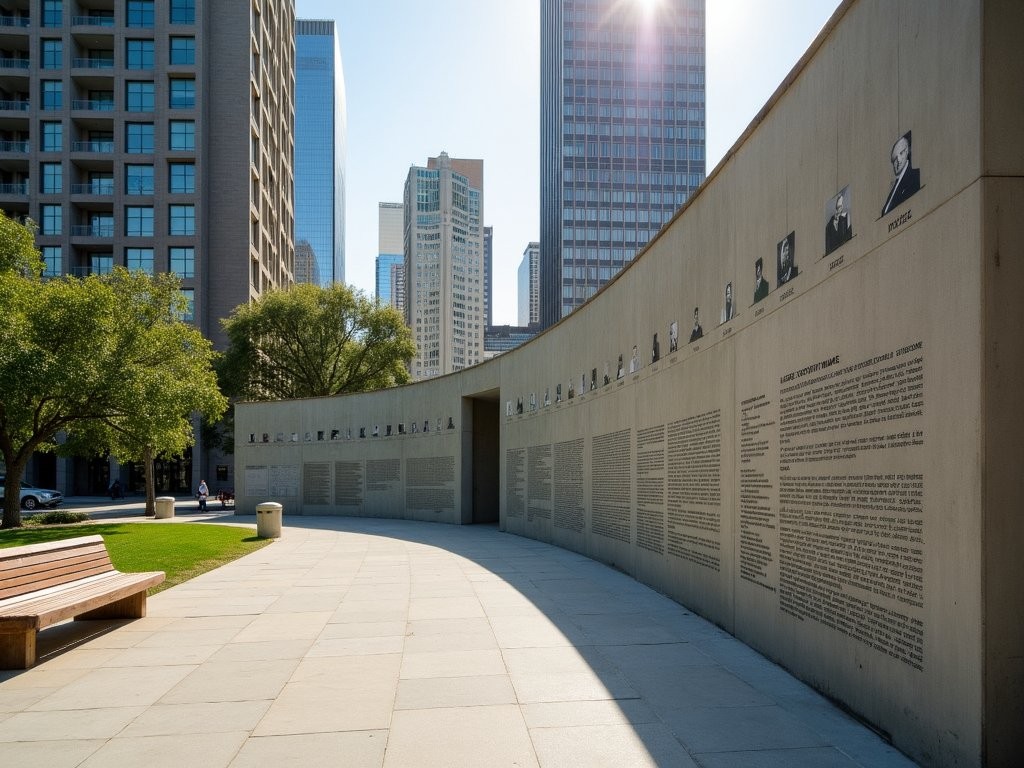
💡 Pro Tips
- The park is small and easy to miss—look for it between 331 and 333 Spring Street
- Read the timeline wall from left to right to follow Mason's remarkable life journey
- Combine with visits to nearby historic sites like the Bradbury Building for an exploration of downtown's hidden history
6. Hollyhock House: Frank Lloyd Wright's Mayan Revival Masterpiece
Perched atop Barnsdall Art Park in East Hollywood sits one of Frank Lloyd Wright's most distinctive creations—and perhaps his most underappreciated Los Angeles masterpiece. Completed in 1921 for oil heiress Aline Barnsdall, Hollyhock House represents Wright's early experimentation with what would become known as Mayan Revival style, incorporating pre-Columbian motifs into modernist architecture.
As someone who's photographed Wright buildings across America, I found Hollyhock House particularly fascinating for how it responds to the Southern California environment. The home creates a seamless indoor-outdoor flow decades before this became a hallmark of California design. Wright incorporated a series of rooftop terraces and garden courts that frame spectacular views of the Hollywood Hills and downtown LA skyline.
The house takes its name from Barnsdall's favorite flower, the hollyhock, which Wright abstracted into geometric forms that appear throughout the home as decorative elements. These stylized motifs create a unified design language that extends from the exterior concrete to the interior furniture and textiles—many pieces of which Wright designed specifically for this space.
My architectural photographer's eye was drawn to the dramatic play of light through the home's distinctive windows, which filter California sunshine into geometric patterns across the interior spaces. For visitors interested in capturing similar images, I recommend bringing a wide-angle lens to properly document the expansive interior rooms and dramatic exterior perspectives. This lens has been invaluable in my architectural photography work, allowing me to capture the full spatial experience even in confined areas.
What makes Hollyhock House particularly special is its recent restoration. After decades of deterioration, a meticulous seven-year restoration completed in 2015 returned the house to its original glory, revealing Wright's original color schemes and repairing damaged features. In 2019, it received UNESCO World Heritage status, finally giving this architectural treasure the international recognition it deserves.
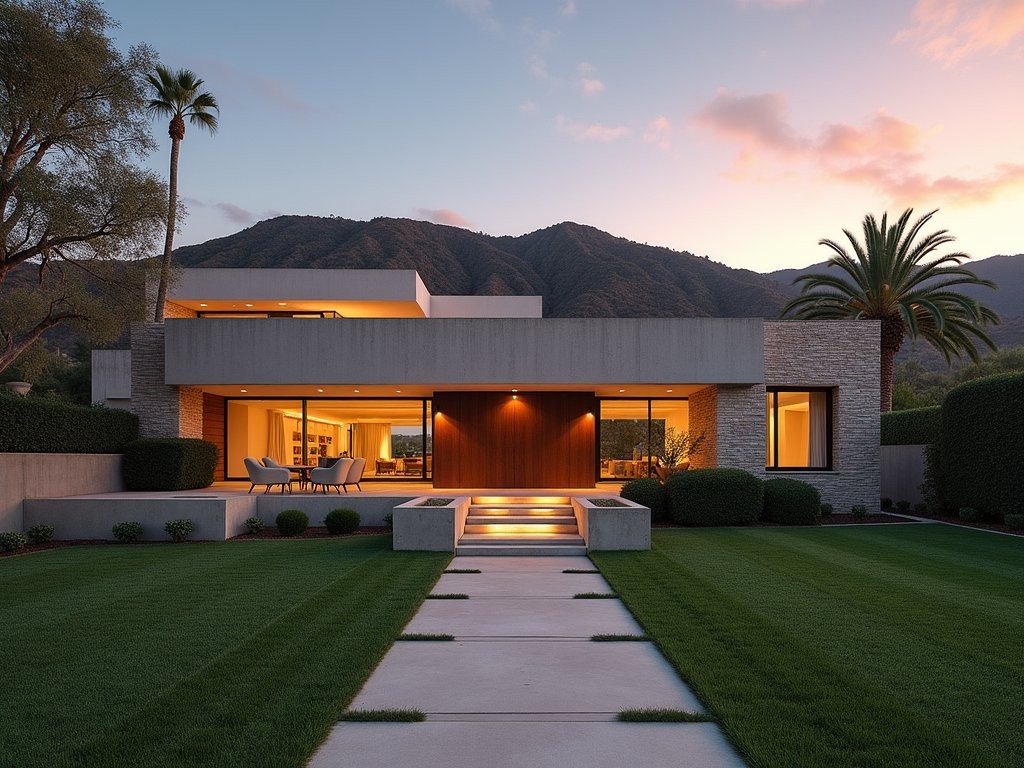
💡 Pro Tips
- Purchase timed-entry tickets online in advance as they frequently sell out
- Visit in late afternoon when the light creates dramatic shadows across the textured concrete walls
- Don't miss the rooftop terraces which offer some of the best views in Los Angeles
7. The Eagle Rock: Indigenous Sacred Site Hidden in Plain Sight
Some of Los Angeles' most significant historical sites aren't buildings at all, but natural landmarks that held deep meaning for the region's original inhabitants. The Eagle Rock—a massive boulder with a distinctive shadow pattern resembling an eagle with outstretched wings—stands as one such monument in the neighborhood that bears its name.
This 200-foot-tall sandstone formation held sacred significance for the indigenous Tongva people long before European settlement. The rock's eagle shadow appears most prominently during certain times of day, creating what the Tongva considered a powerful spiritual symbol. Today, it's easy to drive past this geological formation without understanding its cultural importance—something I nearly did myself before researching the area's indigenous history.
What makes visiting the Eagle Rock particularly special is experiencing how this natural landmark has remained a constant presence while the city transformed around it. Standing at the viewing area on Colorado Boulevard, I was struck by the juxtaposition of this ancient formation against the backdrop of modern urban life—cars rushing past a site that has been revered for centuries.
The rock itself sits on private property, but excellent viewing spots exist along Colorado Boulevard. I recommend visiting in mid-afternoon when the shadow is most pronounced, creating the eagle effect that gave this landmark its name. Bring binoculars for a closer look at the geological features and to better appreciate the shadow pattern.
For a deeper understanding of Tongva culture and their relationship with this landscape, I visited the nearby Autry Museum of the American West, which houses an excellent collection of indigenous artifacts and educational materials about the original inhabitants of the Los Angeles basin. Their First Californians exhibit provides crucial context for appreciating sites like Eagle Rock beyond their geological features.
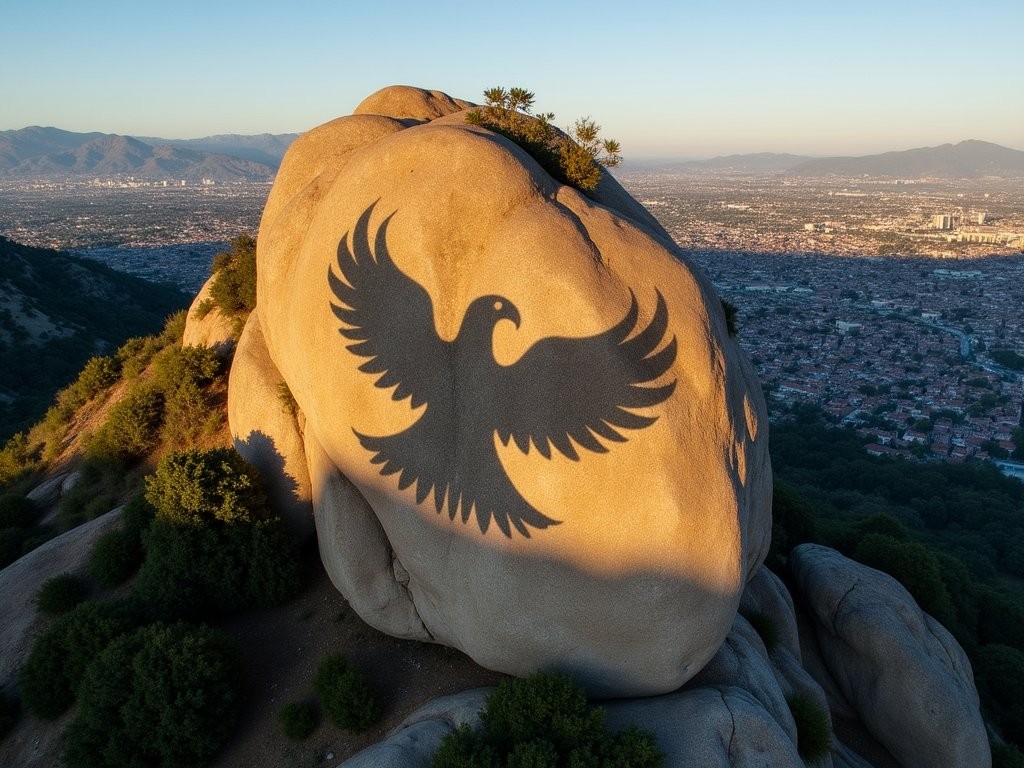
💡 Pro Tips
- Visit between 1-3pm for optimal viewing of the eagle shadow effect
- The best public viewing spot is at the corner of Colorado Boulevard and Scholl Canyon Road
- Pair with a visit to the Autry Museum to learn more about Tongva cultural history
8. Lummis House: Hand-Built Stone Masterpiece of LA's First Environmentalist
Hidden along the Arroyo Seco in Highland Park stands one of Los Angeles' most extraordinary homes—a rustic stone castle built by hand by Charles Fletcher Lummis, a remarkable figure who shaped early Los Angeles as journalist, photographer, librarian, preservationist, and champion of Native American rights.
What captivated me about Lummis House (also called El Alisal, "place of the sycamores") is that Lummis built it himself, stone by stone, over a 13-year period beginning in 1898. This wasn't merely a wealthy man's folly, but a deliberate architectural statement about belonging to the landscape. Lummis collected stones from the nearby Arroyo Seco riverbed, creating a structure that seems to emerge organically from the environment.
As I wandered through the home's rustic interior, I was struck by how the design incorporated elements from Spanish colonial architecture, Native American building traditions, and Arts and Crafts principles—creating a uniquely Californian aesthetic decades before this became fashionable. The massive stone fireplace, hand-hewn wooden beams, and built-in furniture showcase Lummis's vision of architecture rooted in local materials and traditions.
What makes this site particularly special is how it represents Lummis's forward-thinking environmental and cultural values. As editor of the Los Angeles Times and founder of the Southwest Museum, Lummis advocated for preservation of California's Spanish colonial heritage and Native American cultures at a time when most Angelenos were focused solely on modernization and development.
During my visit, a volunteer docent shared fascinating stories about the famous guests who attended Lummis's legendary parties here—from John Muir to Will Rogers. The home became an intellectual and artistic salon where the future of Los Angeles was vigorously debated, with Lummis championing conservation and cultural preservation decades before these became mainstream concerns.
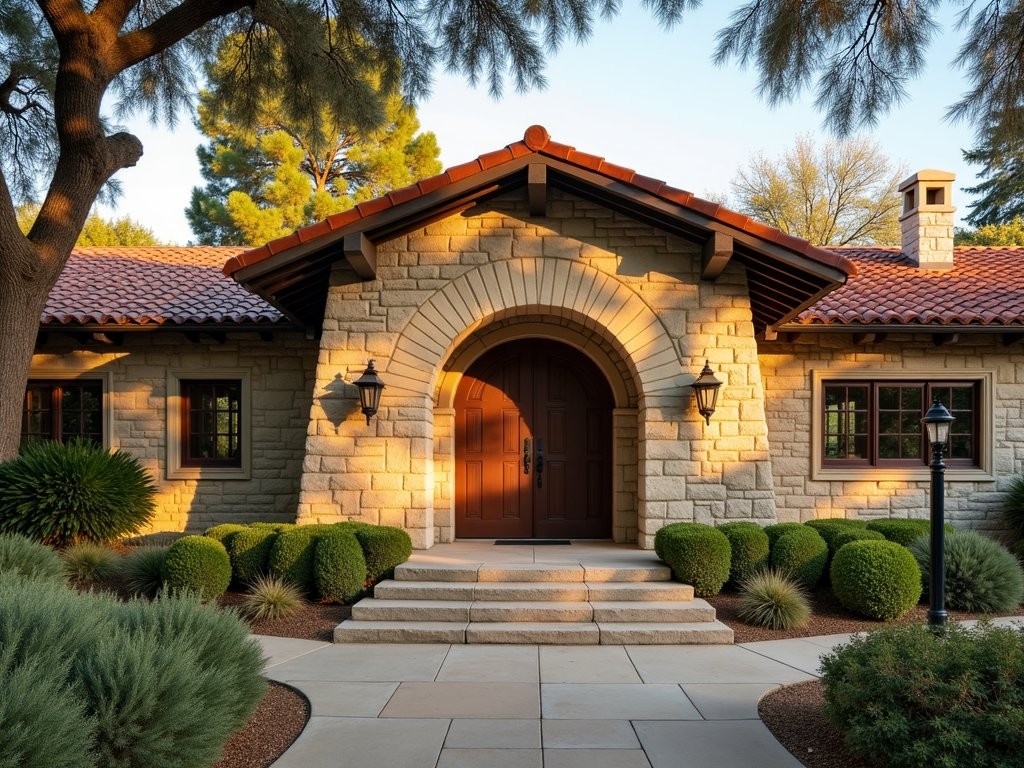
💡 Pro Tips
- Visit on weekends between noon and 4pm when docents offer free tours
- Explore the native plant garden surrounding the house which showcases Lummis's early interest in drought-tolerant landscaping
- Look for the original stone carving of the home's motto: 'Vamos a la Casa del Alisal, donde el Fuego nunca se apaga y la Puerta nunca se cierra' (Come to the House of the Sycamores, where the Fire never dies and the Door never closes)
9. The Old Venice Canals: Remnants of a California Dream
While Venice Beach's remaining canals are relatively well-known, few visitors realize they're merely a small fraction of an ambitious early 20th-century development that once encompassed much more of the neighborhood. The story of these canals—and the lost ones—reveals much about Los Angeles' boom-and-bust development cycles.
When tobacco millionaire Abbot Kinney created "Venice of America" in 1905, his vision included 16 miles of canals in a grand Venetian-inspired residential district. Gondoliers in striped shirts ferried visitors through a network of waterways lined with Italian-style buildings and bridges. It was an audacious attempt to create an American version of the famous Italian city on the Southern California coast.
Today, only a quarter of the original canal system remains. Walking the historic district, I was fascinated by the ghost geography—places where canals once flowed but were filled in during the 1920s to create additional roads as automobile culture took hold. With a knowledgeable eye, you can still detect the pattern of the lost waterways in the neighborhood's street layout.
What makes the surviving canals special is how they've evolved from tourist attraction to treasured residential enclave. The eclectic homes lining today's canals range from original 1900s cottages to ultra-modern architectural statements, creating a living museum of LA residential design across more than a century.
During my visit, I rented a stand-up paddleboard from a nearby shop to explore the canals from water level—an experience I highly recommend for a different perspective on this historic district. The inflatable design makes it easy to transport to the canals, and paddling quietly through these historic waterways offers a unique vantage point on the architectural details and lush gardens that can't be fully appreciated from the footpaths.
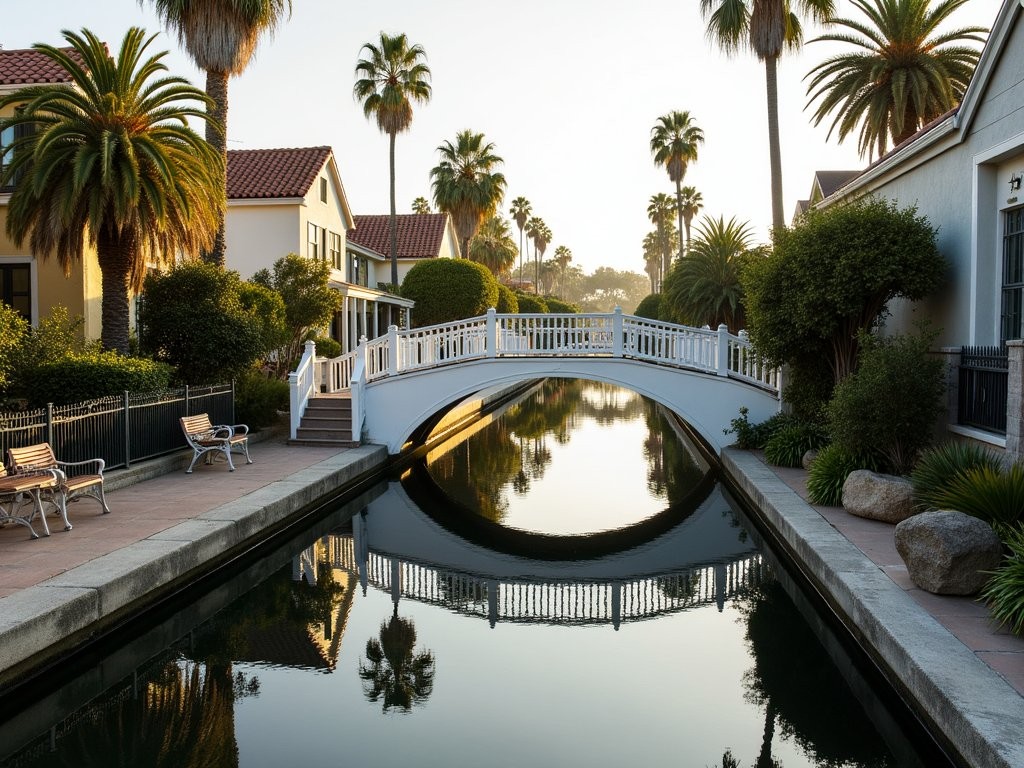
💡 Pro Tips
- Visit on weekday mornings to avoid crowds and capture the canals in beautiful morning light
- Look for the historic plaques showing where the original, larger canal system once flowed
- Respect residents' privacy while exploring—this is a living neighborhood, not just a tourist attraction
10. James Irvine Japanese Garden: Downtown's Secret Feudal Oasis
Perhaps Los Angeles' most perfectly hidden historical gem lies in the heart of Little Tokyo, where most visitors walk past without ever knowing it exists. Tucked behind the Japanese American Cultural & Community Center, the James Irvine Japanese Garden (known in Japanese as Seiryu-en or "Garden of the Clear Stream") offers a meticulously designed landscape that transports visitors from urban downtown to a serene feudal Japanese environment.
What makes this garden particularly special is its historical authenticity. Unlike many Japanese-inspired gardens in America that incorporate Western elements, this half-acre oasis was designed by noted Japanese garden master Takeo Uesugi in 1979 as a faithful representation of traditional Japanese landscape design principles. The garden incorporates classic elements—flowing water, carefully placed stones, traditional plantings, and a traditional tea house—arranged to create a contemplative journey through a series of carefully composed vignettes.
During my visit, I was struck by how effectively the garden blocks out the surrounding urban environment. Despite being surrounded by downtown skyscrapers, the careful placement of trees and structures creates a sense of boundless nature—a core principle of Japanese garden design. The sound of the cascading stream masks urban noise, enhancing the illusion of being far from city life.
The garden also holds special significance for the Japanese American community as a space of reflection on the community's history in Los Angeles. Plaques throughout the space provide context about Japanese immigration to California and the community's resilience through challenging periods, including internment during World War II.
I spent a peaceful afternoon sketching the garden's stone arrangements and photographing the interplay of light through the Japanese maples. For visitors seeking authentic cultural experiences, I recommend timing your visit to coincide with one of the traditional tea ceremonies occasionally held in the garden's tea house—an immersive way to connect with Japanese cultural traditions in a historically significant setting.

💡 Pro Tips
- Enter through the Japanese American Cultural & Community Center on San Pedro Street
- Visit during weekday afternoons when the garden is typically least crowded
- Check the JACCC calendar for traditional cultural demonstrations in the garden
Final Thoughts
These ten historical treasures reveal a Los Angeles rarely glimpsed by casual visitors—a city with deep cultural roots, architectural innovation, and stories far more complex than Hollywood narratives suggest. What strikes me most after exploring these sites is how they collectively challenge the persistent myth of LA as a city without history. From indigenous sacred sites to Victorian mansions, from hand-built stone castles to Japanese gardens, the real Los Angeles reveals itself through these overlooked landmarks.
For couples seeking meaningful connection with the authentic soul of this misunderstood metropolis, these sites offer something profoundly valuable: genuine encounters with the diverse communities and visionary individuals who shaped Southern California. Whether you're architectural enthusiasts, history lovers, or simply travelers seeking deeper cultural understanding, these hidden historical gems will transform how you see Los Angeles forever.
✨ Key Takeaways
- Los Angeles history extends thousands of years beyond Hollywood
- The city's most fascinating historical sites often hide in plain sight
- These overlooked landmarks tell stories of diverse communities that shaped Southern California
📋 Practical Information
Best Time to Visit
year-round (Los Angeles enjoys favorable weather in all seasons)
Budget Estimate
$100-150 per day including accommodations, transportation and attraction fees
Recommended Duration
5-7 days to explore these sites without rushing
Difficulty Level
Easy (Most Sites Are Accessible With Minimal Physical Demands)

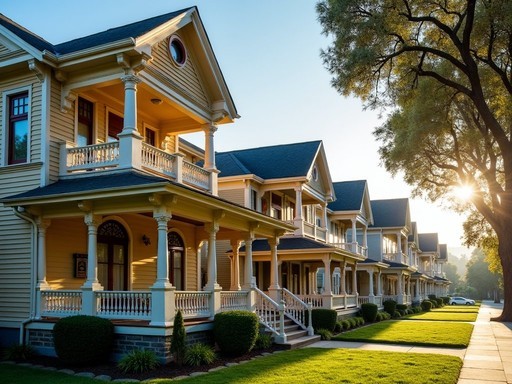
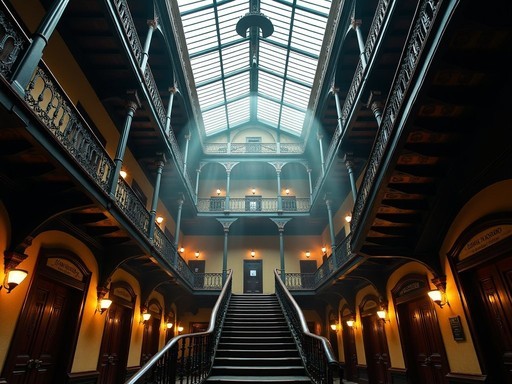
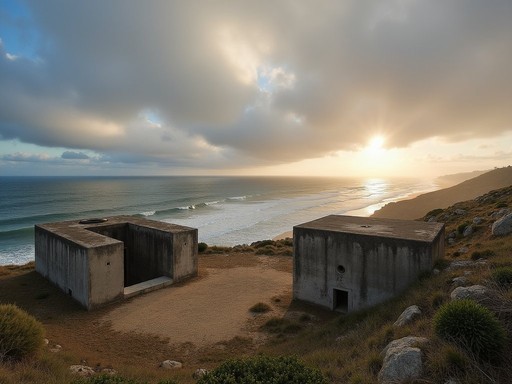
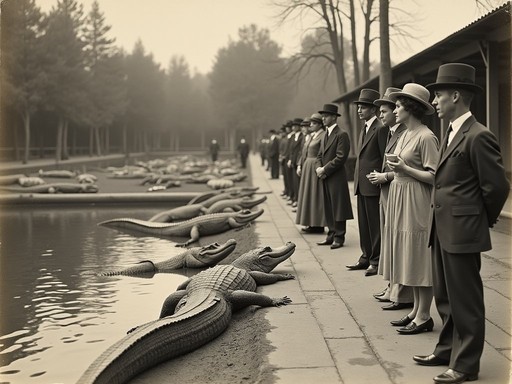
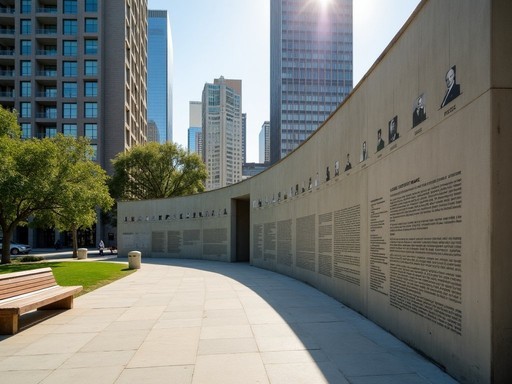
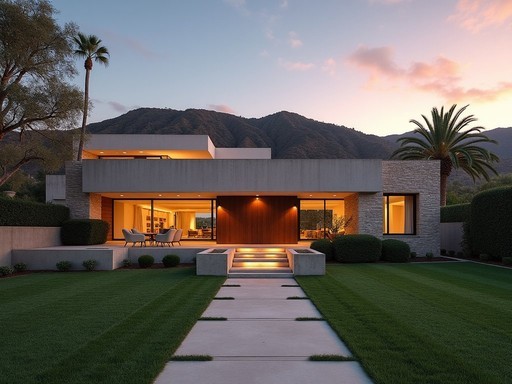



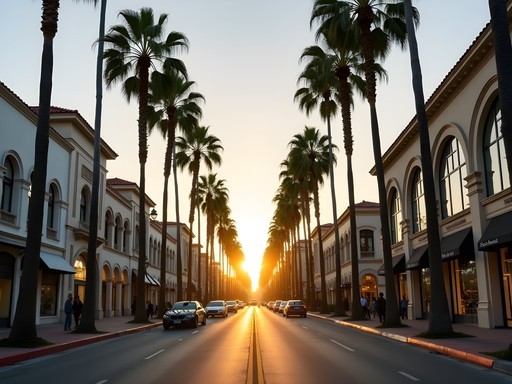
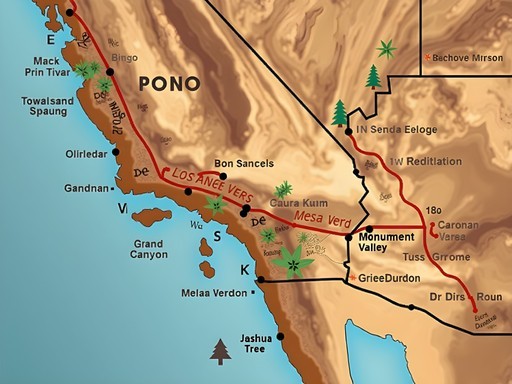
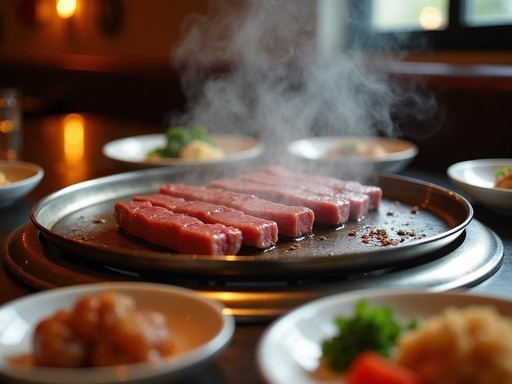
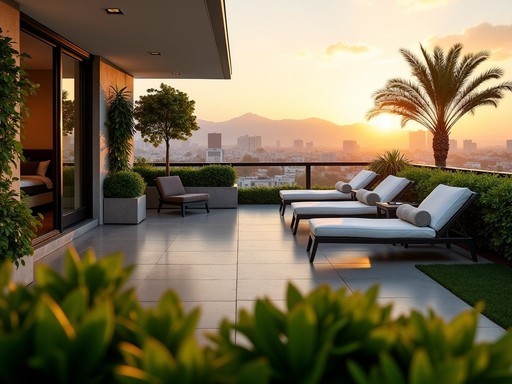
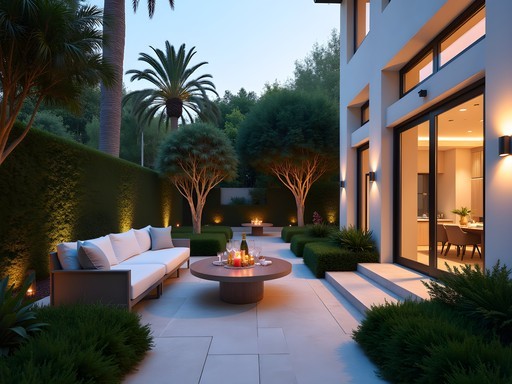
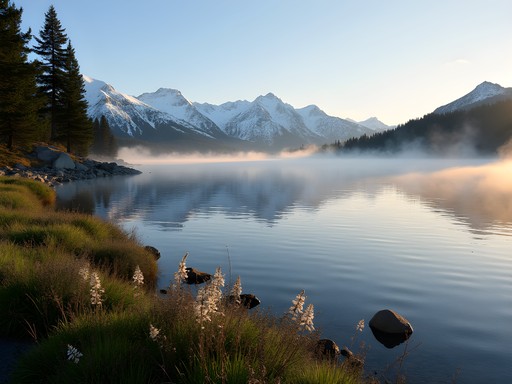
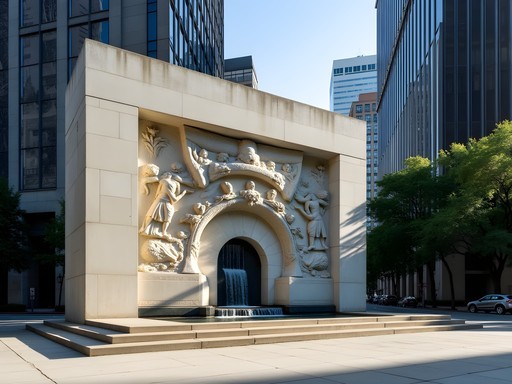
Comments
Douglas Bradley
Great post on LA's hidden history, Claire! I visited Heritage Square Museum last year and was fascinated by those preserved Victorian homes. One tip for other travelers: consider using LA's Metro to get around rather than dealing with the infamous traffic. I used the guidebook which has excellent public transit maps and walking tours connecting these historical sites. The Alligator Farm photos in your post are incredible - I had no idea that was once a thing in LA!
beachmate2338
We did the public transportation too and it was great! Way less stressful than driving.
Douglas Bradley
Absolutely! The Expo Line is particularly useful for hitting several of these spots. Did you make it to any of the other places on Claire's list?
beachmate2338
Just Heritage Square and Bradbury so far. Planning another trip in January to see more!
beachmate2338
Just visited the Bradbury Building last weekend - wow! That ironwork is even more impressive in person than in your photos. The light streaming through those skylights feels almost magical. We went around 3pm and it wasn't crowded at all. If you're there, the Grand Central Market across the street has amazing food options too!
Douglas Bradley
The Bradbury is such an architectural gem! Did you know it was featured in Blade Runner? I'm curious if you checked out the Fort MacArthur Military Museum that Claire mentioned? It's on my list for my LA trip next month.
beachmate2338
I didn't make it to Fort MacArthur yet! But it's definitely on my list for next time. And yes, I'm a huge Blade Runner fan - that's actually what made me want to visit the Bradbury!
wavelife
Just got back from LA and actually visited 3 places on this list!! The Alligator Farm history is WILD - can't believe that was actually a thing in LA! My favorite though was Fort MacArthur - those huge gun batteries are so eerie now. We went late afternoon and practically had the place to ourselves. Tip: bring a jacket even if it's hot in LA, that coastal breeze gets chilly! We also found this tiny museum in Pasadena called the Bunny Museum that wasn't on your list but was super quirky - 35,000+ bunny items! Perfect weird LA vibe. I used my pocket guide to find some other hidden spots too. Thanks for this post Claire, saving it for our next trip!
photowalker3286
Has anyone been to the Los Angeles Alligator Farm mentioned in the article? I can't believe this was actually a thing in LA! Are there any remnants or exhibits about it somewhere?
roamone
It's gone now but the Lincoln Park Historical Society has some amazing old photos and memorabilia! Worth checking out if you're into weird LA history.
Megan Martin
Claire, this is exactly the kind of content I share with business travelers who want to experience the real LA during downtime! I've taken clients to the Bradbury Building between meetings downtown and they're always impressed. One tip for readers: many of these sites are accessible via Metro, which helps avoid LA's notorious traffic. The Heritage Square Museum is just a short walk from the Heritage Square Gold Line station, and the Bradbury Building is steps from Pershing Square station. Perfect for visitors without rental cars!
summerlife
Great list! Is Heritage Square Museum easy to get to without a car? Staying downtown next month and trying to avoid renting.
wavelife
We did public transportation to Heritage Square! Take the Gold Line to the Heritage Square station, then it's about a 10 min walk. Super easy!
summerlife
That's perfect, thanks! Did you need to book tickets in advance?
wavelife
Nope, we just showed up! But check their website for hours - they're closed some weekdays.
summerphotographer
Love this! Saving for my LA trip next month!
skylover5849
I visited Fort MacArthur last month and was blown away by how interesting it was! The docent there (older gentleman named Bill) gave us the most incredible tour explaining all about LA's coastal defenses during WWII. They have these massive gun batteries that I had no idea existed in LA. The views of the harbor are spectacular too. If you go, wear comfortable shoes as there's quite a bit of walking on uneven terrain. Definitely one of the most underrated historical sites in the city!
vacationlife
Did you check out the underground tunnels? I heard they do special tours but wasn't sure if it's worth the extra cost.
skylover5849
Yes! The tunnel tour was actually included when we went (first Sunday of the month). Absolutely worth it - super atmospheric and the historical context they provide makes it even better.
Hunter Thompson
Absolutely brilliant post, Claire! Just got back from LA where I followed your recommendations - the Fort MacArthur Museum was properly mind-blowing! Those massive gun batteries are incredible, and the views of the harbor are unreal. The volunteer guides there knew EVERYTHING about LA's military history. I'd add one more spot to your list: the old Griffith Park Zoo ruins. It's properly eerie walking through the abandoned animal enclosures. Has anyone else checked that place out? Feels like walking through a post-apocalyptic film set!
Claire Hawkins
Thanks Hunter! The Old Zoo at Griffith was actually #11 on my list before editing - great catch! Those abandoned cages are hauntingly beautiful, especially early morning when the light hits just right.
Sage Dixon
Claire, this is exactly the kind of LA content I've been searching for! I visited last year and completely missed most of these gems. The Bradbury Building was the only one I stumbled upon (thanks to Blade Runner being one of my favorites). That atrium with the wrought iron and those vintage elevators is incredible in person - the light filtering through is almost mystical. Did anyone check out the Underground Tunnels beneath Downtown? I heard they were used during Prohibition but ran out of time to explore them. Definitely putting Fort MacArthur on my list for next time - I'm a sucker for abandoned military sites with ocean views!
wavelife
OMG yes! The Bradbury Building is STUNNING. I couldn't stop taking photos of those staircases!
Sage Dixon
Right? I think I have about 50 photos just of those staircases from different angles. The light changes everything throughout the day!
Venture X
Premium card with 2X miles, $300 travel credit, Priority Pass